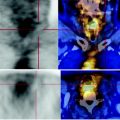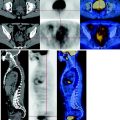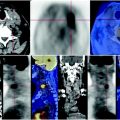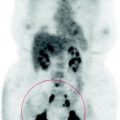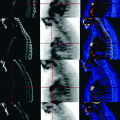Fig. 60.1
MIP image: The high lung deposition of FDG is determined by the condition of chronic inflammation of the interstitium and by the presence of lymphocytic alveolitis
The extent of the interstitial disease in this patient seems remarkable: the pulmonary uptake exceeds that of the mediastinum and liver.
As the gallium scintigraphy, PET-FDG allows us to evaluate the biological activity of the disease, while the CT shows the morphology of the fibrotic damage.
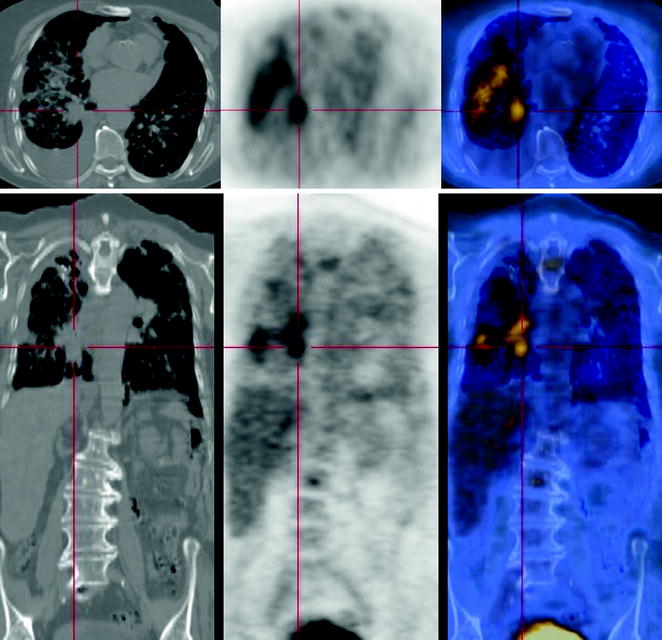
Fig. 60.2




At CT, a marked reticular thickening of the interstitium, diffusely involving the parenchyma of both lungs, can be seen. At the inferior bronchus of the right lung, a ground-glass nodule is seen, characterized by ill-defined margins and satellite areas of parenchymal consolidation. The FDG-PET demonstrates limited consumption of glucose in the lesion
Stay updated, free articles. Join our Telegram channel

Full access? Get Clinical Tree



